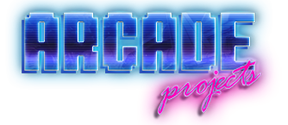winteriscoming
Champion
Now that I'm digging into the JVS control protocol, I'm trying to think about some additional applications beyond the driving setup I have and I'd love to get a decent light gun setup going at some point.
As I understand it, Sega light gun signals get transmitted to the JVS I/O as 2 analog channels for X and Y positions. In fact, I see that mounted guns are an option in the case of JVS shooters. I'd prefer a gun that's not mounted, though.
It would be great to just get a set of Sega light guns and set them up for my use, but that seems to be too cost prohibitive. I'll keep an eye out, though. Sometimes I see full cabinets going for cheaper than the parts.
Now that I've got analog figured out from a JVS perspective, any number of solutions seem possible from a lightgun standpoint. It would just be a matter of interpreting the gun's X and Y positions and reporting the necessary bytes to the analog channels. In this type of implementation, absolutely no analog outputs need to be generated. I'd be skipping that in favor of translating the gun's position as analog byte data that the JVS protocol expects.
So the question then really becomes how to handle this issue. A Wii remote provides probably the cheapest and most well documented route, but I question whether or not it would be usable at typical arcade cabinet distances. There's the AimTrak, which I bought into early on, but quickly became disappointed with the accuracy... Maybe something similar could be developed that uses more LEDs for tracking, similar to the Sega setup?
I once came upon a forum somewhere where some members were discussing a DIY alternative to the Sega setup, but I can't seem to find it now. As I recall @twistedsymphony was involved in that discussion and might be able to share.
At any rate, many of my project ideas have come to fruition on this forum, so it's worth a discussion.
I doubt I'm ready to pursue working on this any time soon, but wanted to get a discussion started.
As I understand it, Sega light gun signals get transmitted to the JVS I/O as 2 analog channels for X and Y positions. In fact, I see that mounted guns are an option in the case of JVS shooters. I'd prefer a gun that's not mounted, though.
It would be great to just get a set of Sega light guns and set them up for my use, but that seems to be too cost prohibitive. I'll keep an eye out, though. Sometimes I see full cabinets going for cheaper than the parts.
Now that I've got analog figured out from a JVS perspective, any number of solutions seem possible from a lightgun standpoint. It would just be a matter of interpreting the gun's X and Y positions and reporting the necessary bytes to the analog channels. In this type of implementation, absolutely no analog outputs need to be generated. I'd be skipping that in favor of translating the gun's position as analog byte data that the JVS protocol expects.
So the question then really becomes how to handle this issue. A Wii remote provides probably the cheapest and most well documented route, but I question whether or not it would be usable at typical arcade cabinet distances. There's the AimTrak, which I bought into early on, but quickly became disappointed with the accuracy... Maybe something similar could be developed that uses more LEDs for tracking, similar to the Sega setup?
I once came upon a forum somewhere where some members were discussing a DIY alternative to the Sega setup, but I can't seem to find it now. As I recall @twistedsymphony was involved in that discussion and might be able to share.
At any rate, many of my project ideas have come to fruition on this forum, so it's worth a discussion.
I doubt I'm ready to pursue working on this any time soon, but wanted to get a discussion started.






 lol
lol
